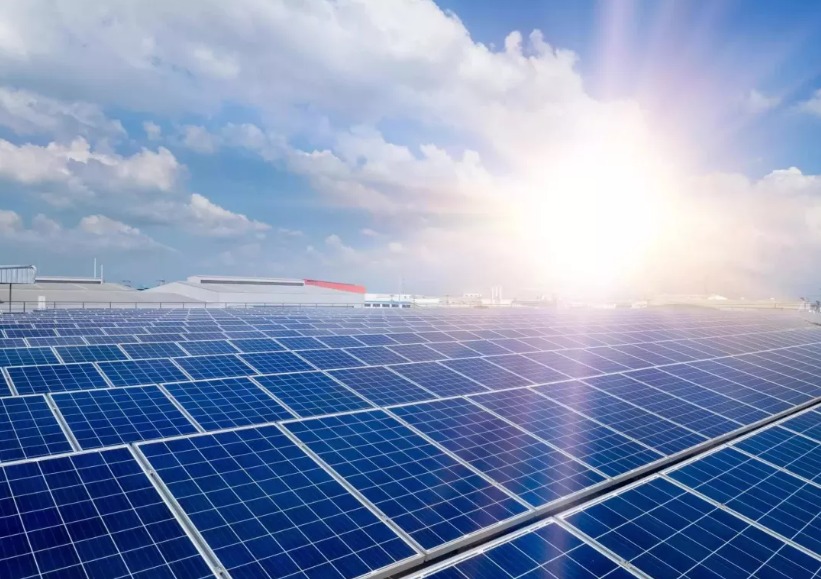World News01.07.2024
New light-harvesting system could revolutionize solar energy, researchers claim

QAZAQ GREEN. The solar energy revolution might be about to shift into an even higher gear. Researchers in Germany have developed a groundbreaking new light-harvesting system that could drive a huge leap in solar cell efficiency by absorbing light across the entire visible range, TechSpot reports.
For years, solar tech has been hamstrung by some fundamental limitations. Traditional silicon-based solar cells can absorb light across the entire visible spectrum, which is great, but they do so "weakly." They also need to be thick – we're talking micrometers – to soak up enough photons to generate meaningful electricity. That added bulk makes them heavier, pricier, and harder to integrate seamlessly into buildings and vehicles.
On the flip side, thin-film solar cells made from organic dyes are cheap and lightweight, clocking in at just 100 nanometers thick. But they can only absorb a narrow slice of the solar spectrum, which is not an ideal tradeoff.
Now, scientists at the University of Würzburg may have cracked the code with a new bio-inspired design. The study, published in the journal Chem, highlights a new system, dubbed URPB, modeled after the photosynthetic antennae in plants and bacteria that so efficiently capture sunlight.
But rather than relying on nature's complex machinery, the URPB uses a simpler structure – four different dyes arranged in a precisely stacked configuration. Because the arrangement is so neat, it can capture light across UV, visible, and near-infrared wavelengths with excellent efficiency. And that's where the name comes from. URPB corresponds to the four light wavelengths each layer can absorb: ultraviolet, red, purple, and blue.
In the team's testing, the system converted a full 38% of incoming light into useful energy – orders of magnitude better than the individual dyes could manage on their own, maxing out at just 3%.
Current solar cell technology is rapidly maxing out in efficiency and the above research is far from the only attempt at squeezing more power out of cells. For instance, a recent Turkish study analyzed a semi-spherical photovoltaic solar cell structure that could absorb up to 66% more light compared to flat panels. Computer simulations looked promising, but real-world prototyping is needed.
Before this in 2023, scientists attempted to enhance traditional silicon solar cells by adding a new perovskite layer on top. This compound captures different light wavelengths, potentially increasing efficiency beyond 30% – a pivotal threshold for making solar energy more viable at a global scale.
Of course, moving technology like this from the lab to commercial-scale manufacturing is always an uphill battle. Every solar breakthrough sparks plenty of hype before reality sets in.
Kazakhstan and UAE reaffirm strategic energy partnership with 1 GW wind project
Solar becomes EU’s top power source for the first time ever
How decentralised renewables transform healthcare services in rural Zimbabwe
Chinese company to build solar and wind power plants in Kyrgyzstan
Seaturns raises €2.45 million to industrialize wave energy technology and accelerate global rollout
Trump signs executive order to end subsidies for wind and solar energy
Uzbekistan's solar and wind power plants generate 5 Billion kWh since beginning of the year
Green Corridor Alliance JV registered in Baku to promote green energy development in Central Asia and the South Caucasus
In the EU renewable energy supply grew by 3.4% in 2024
IRENA accepting renewable energy project proposals in Central Asia until August 15
Astana to host Electronica Expo Kazakhstan Electronics Exhibition
WB gives rundown of Azerbaijan's green energy grid volume prospects
US solar sets new records as renewables nearly match natural gas – EIA
‘Wings’ on poles: Bill Gates-backed breakthrough wind turbine facility breaks ground
Perovskite tandem solar cell achieves new efficiency record
Kazakhstan and China endorse draft SCO joint statement on sustainable energy development
Innovative research on organic solar cells for space applications
Kazakhstan and Uzbekistan drive green energy progress in Central Asia
KazMunayGas launches pilot green hydrogen project in Atyrau
How private homeowners in Kazakhstan can make money from solar panels











